Dried abalone holds a special place in Chinese culinary traditions and is a sought-after delicacy, particularly during important events like the Chinese New Year. Known for its distinct flavour and texture, this ingredient is both expensive and challenging to work with. For those interested in using dried abalone in their dishes, there are numerous recipes that highlight its unique qualities and exquisite taste.
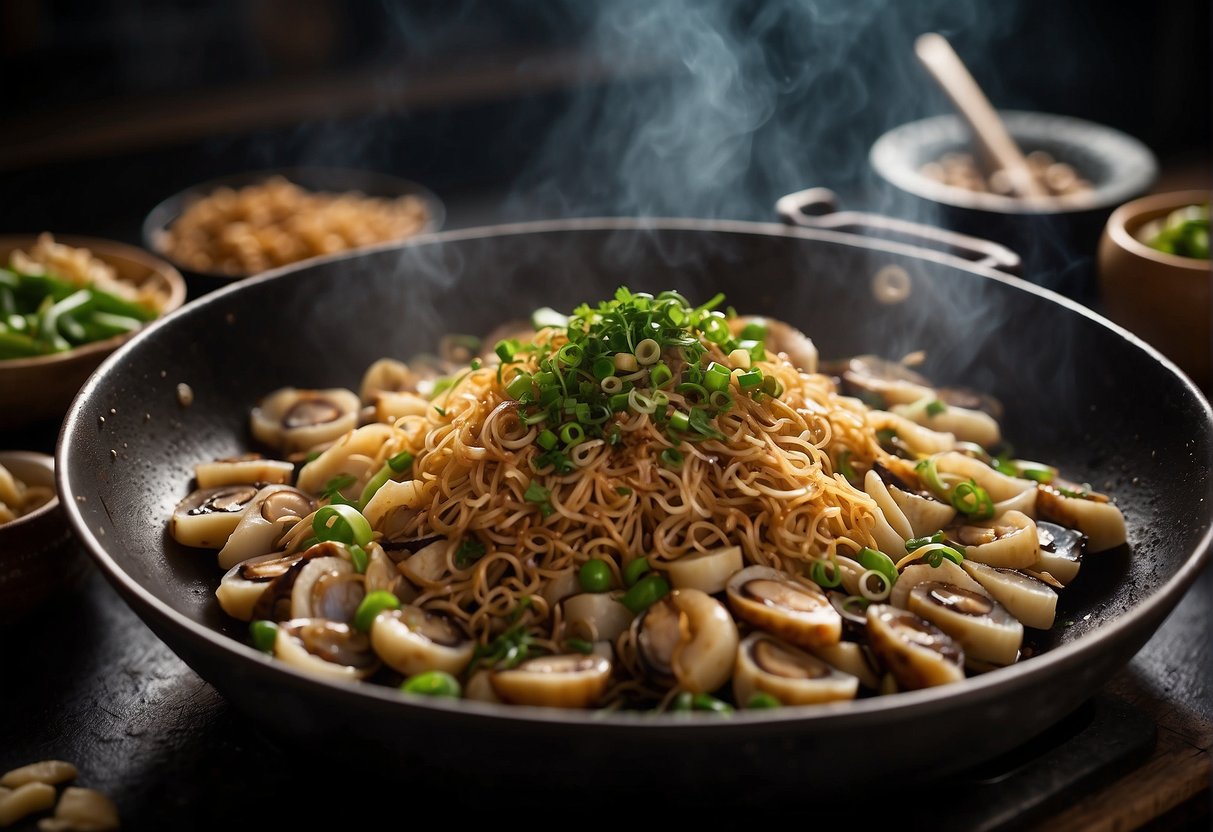
Before you start cooking with dried abalone, it's important to understand what it is and how to prepare it. Abalone is a type of sea snail that is harvested for its meat, which is considered a delicacy in many parts of the world. Dried abalone is typically sold in Asian markets and specialty food stores and must be rehydrated before use. This process can take several hours, so it's important to plan ahead if you're using dried abalone in your recipe.
Once you've prepared your dried abalone, there are a variety of cooking techniques you can use to showcase its unique flavour and texture. Braising and simmering are popular methods for cooking abalone, as they help to tenderize the meat and infuse it with flavour. You can also pair abalone with a variety of other ingredients, such as mushrooms, sea cucumber, and pork, to create a rich and flavourful dish. If you're looking to add a seafood element to your recipe, consider using other types of shellfish, such as scallops or shrimp, to complement the flavour of the abalone.
Key Takeaways
- Dried abalone is a prized ingredient in Chinese cuisine that can be difficult to prepare but is well worth the effort.
- Abalone can be cooked using a variety of techniques, including braising and simmering, and can be paired with a range of other ingredients to create a rich and flavourful dish.
- If you're looking to add a seafood element to your recipe, consider using other types of shellfish, such as scallops or shrimp, to complement the flavour of the abalone.
Understanding Abalone
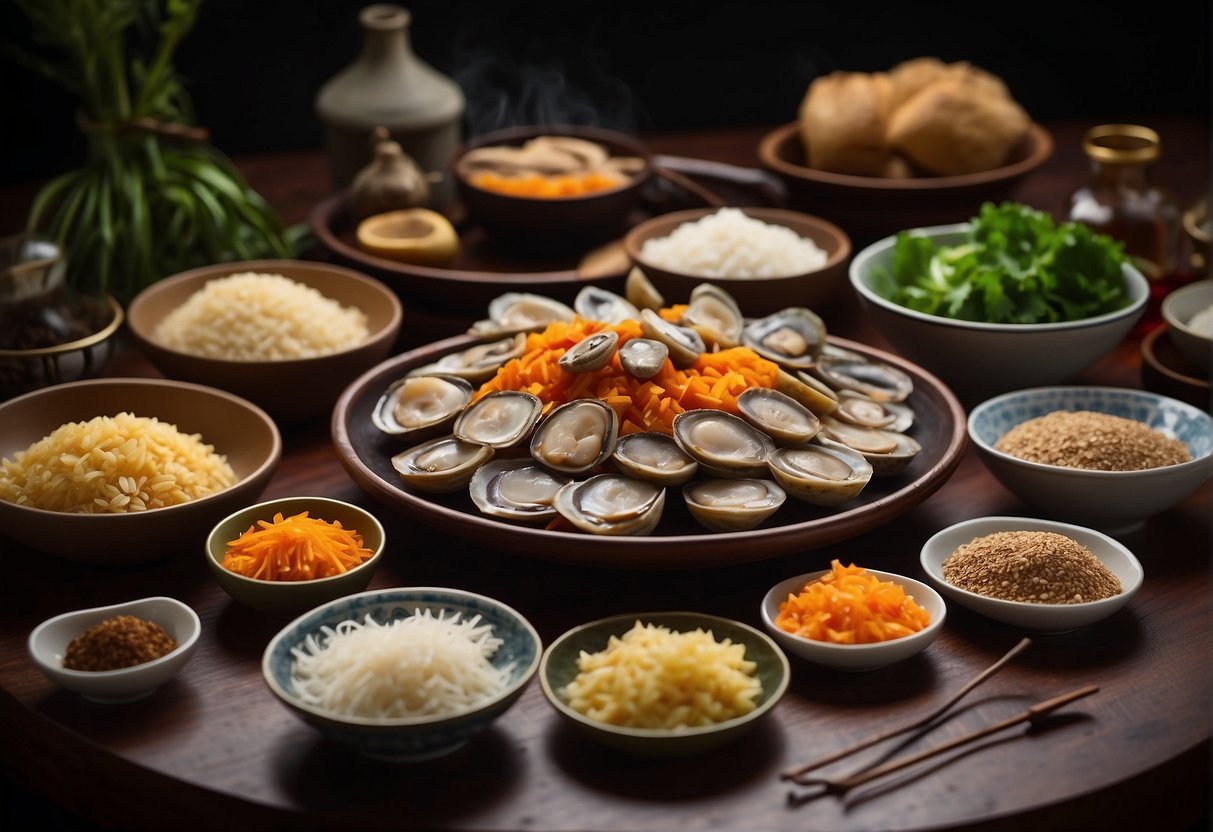
Abalone is a type of shellfish that is highly sought after in Chinese cuisine, particularly during special occasions such as Chinese New Year. There are different types of abalone that are found in various parts of the world, including Australia, Japan, South Africa, New Zealand, North America, and Taiwan. Abalone can be consumed fresh, dried, or canned, and is often farmed.
Types of Abalone
There are many different types of abalone, but the most commonly consumed varieties include black abalone, green abalone, red abalone, and white abalone. Each type of abalone has its own unique characteristics, such as size, texture, and flavour. For example, black abalone is smaller and has a more delicate flavour than other types of abalone.
Nutritional Value
Abalone is a good source of protein, iron, and omega-3 fatty acids, making it a healthy addition to any diet. It is also low in fat and calories, making it a good choice for those who are watching their weight.
Cultural Significance
Abalone has a long history of cultural significance in Chinese cuisine, where it is considered a delicacy and often served during special occasions such as weddings and Chinese New Year. In addition to its culinary uses, abalone is also used in traditional Chinese medicine for its supposed health benefits.
When cooking with abalone, it is important to note that fresh abalone can be difficult to find and expensive, while canned abalone is more readily available and affordable. Dried abalone is also a popular option, but it requires soaking and preparation before it can be used in recipes.
If you are looking to add some variety to your abalone dishes, consider incorporating other types of seafood such as shrimp, scallops, or fish. These can add a new dimension of flavour and texture to your dish, and can be easily found at your local seafood market.
Preparation Basics
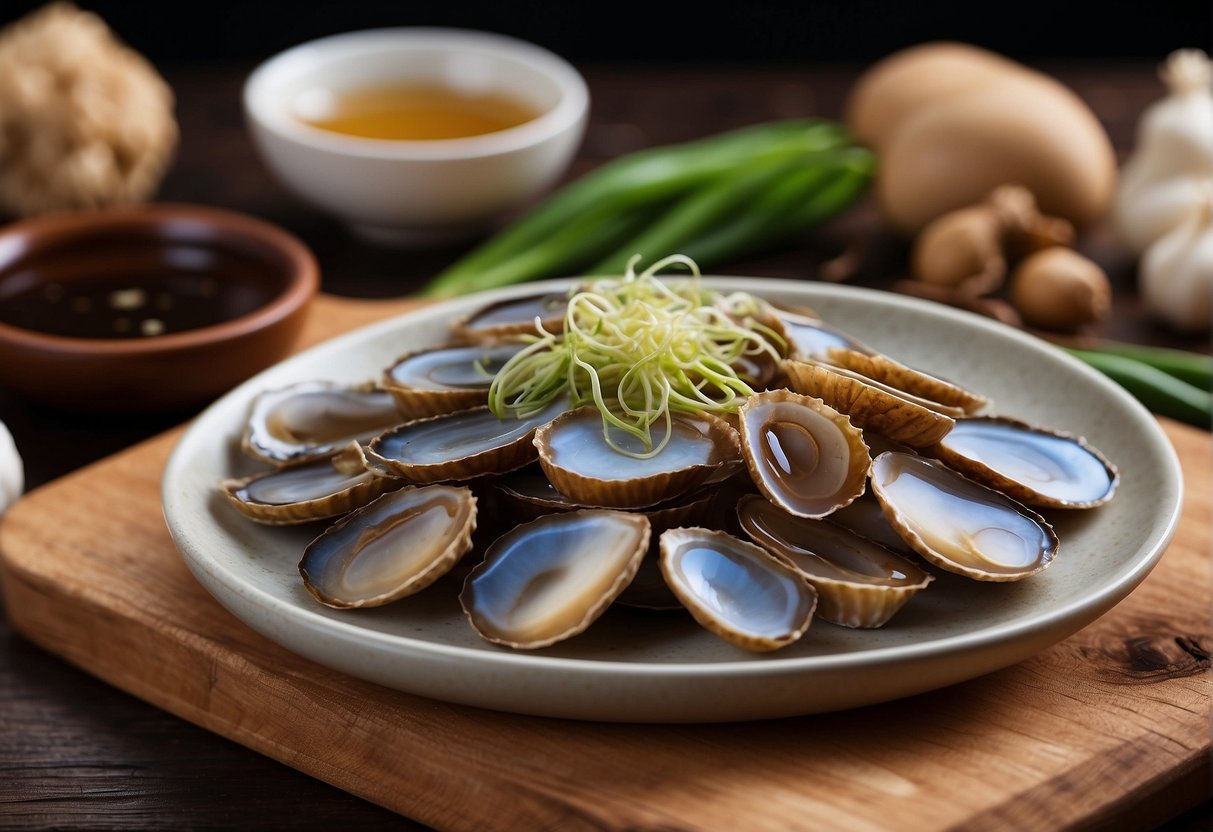
Preparing dried abalone requires some effort but the result is worth it. Follow these basic steps to get started.
Cleaning and Soaking
Before using dried abalone, it's important to clean it thoroughly. Scrub the surface with a brush under running water to remove any dirt or debris. Soak the dried abalone in water for at least 24 hours to rehydrate it. Change the water every 4-6 hours to ensure that the abalone is fully hydrated.
Reconstituting Dried Abalone
Once the abalone is fully hydrated, it's time to reconstitute it. Place the abalone in a pot of boiling water and simmer for 2-3 hours until it becomes soft and tender. Alternatively, you can pressure cook the abalone for 30 minutes.
After reconstituting the abalone, slice it thinly before using it in recipes. The texture of the abalone is similar to that of scallops and can be used in a variety of dishes.
If you're looking to add more seafood to your recipe, consider using shrimp, lobster, or crab meat as a substitute for abalone. These seafood options will complement the abalone and add more flavour to the dish.
Overall, preparing dried abalone requires some patience and effort, but the end result is a delicious and unique ingredient that can take your Chinese recipes to the next level.
Cooking Techniques
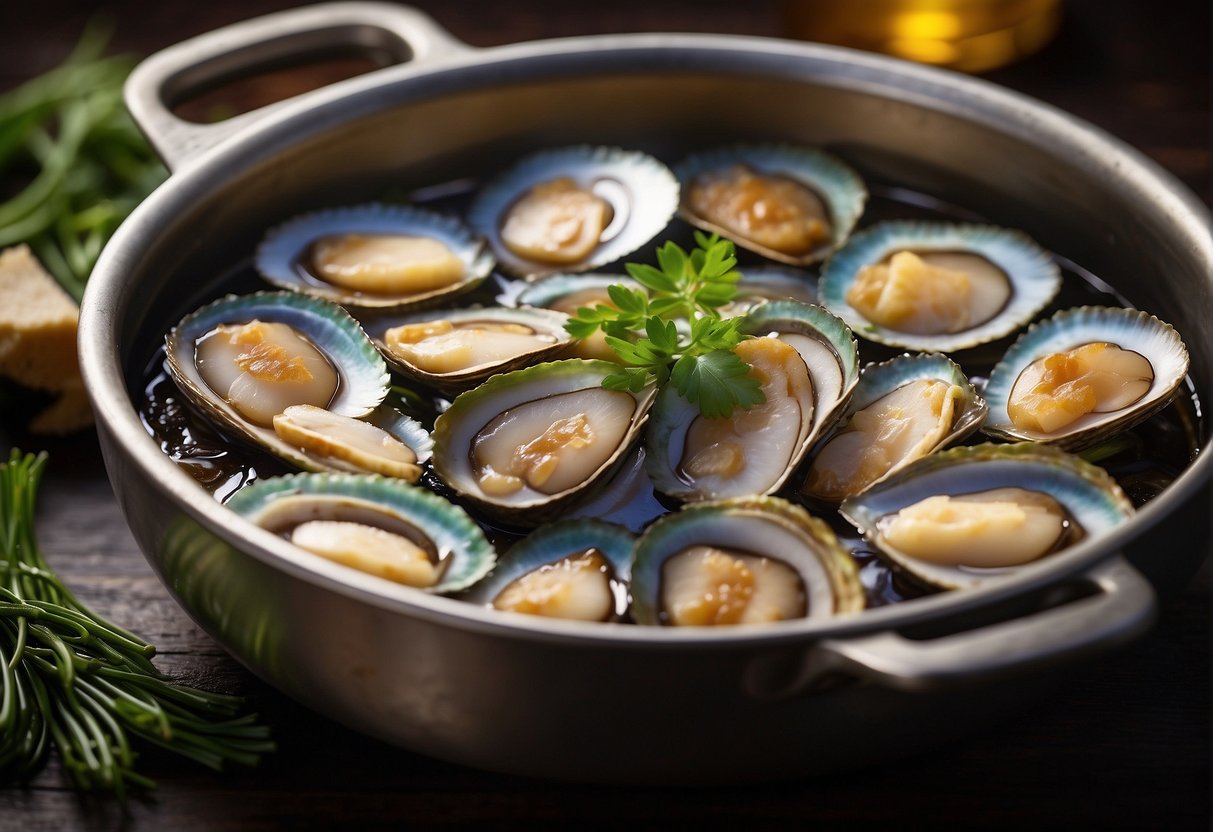
Braising Dried Abalone
Braising is a popular cooking technique for dried abalone. To braise dried abalone, you will need to soak it in water for a few days until it softens. After that, you can braise it in a pot with a combination of cooking wine, soy sauce, sugar, and other ingredients of your choice.
For best results, you can use a pressure cooker to braise dried abalone. This will reduce the cooking time and help to infuse the flavours into the abalone. You can also add some seafood such as shrimp or scallops to the pot to enhance the flavour.
Stewing and Simmering
Stewing and simmering are also great techniques for cooking dried abalone. To stew or simmer dried abalone, you will need to soak it in water until it softens. Then, you can add it to a pot with a combination of liquid such as chicken stock or broth, soy sauce, and other ingredients of your choice.
You can also add some seafood such as fish or crab to the pot to create a delicious seafood stew. Simmering dried abalone in a clay pot is a great way to enhance the flavour and texture of the abalone.
Overall, there are many ways to cook dried abalone. Braising, stewing, and simmering are just a few techniques that you can use to create a delicious and flavourful dish. Don't be afraid to experiment with different ingredients and cooking methods to find the perfect recipe that suits your taste.
Flavour Pairings and Ingredients

When it comes to dried abalone recipes Chinese, there are a few flavour pairings and ingredients that work particularly well. In this section, we'll explore some of the most common accompaniments and seasonings that can be used to enhance the flavour of your abalone dishes.
Common Accompaniments
Abalone pairs well with a range of ingredients, including seafood, pork, chicken, and mushrooms. For a seafood-based dish, consider using shrimp, scallops, or sea cucumber. If you're looking for a meatier option, lean pork or chicken can work well. Shiitake mushrooms are also a popular choice for abalone dishes, adding a rich, earthy flavour.
In addition to these main ingredients, there are a few other accompaniments that can help to enhance the flavour of your abalone dishes. Spring onions, green onions, and lettuce can all be used to add a fresh, crunchy texture, while ginger and garlic can provide a spicy kick.
Seasonings and Sauces
When it comes to seasoning your abalone dishes, there are a few key ingredients to keep in mind. Oyster sauce, soy sauce, and abalone sauce are all popular choices, adding a rich, savoury flavour to your dishes. Light soy sauce is a particularly good option for adding a subtle, salty flavour, while dark soy sauce can be used to add a deeper, more complex flavour.
Other seasonings to consider include chicken powder, chicken bouillon powder, and fish sauce, which can all be used to add a savoury umami flavour. Sugar and salt can also be used to balance out the flavours in your dish, while dried scallops and dried abalone can be used to add a rich, smoky flavour.
Overall, there are many different flavour pairings and ingredients that can be used to create delicious dried abalone recipes Chinese. By experimenting with different combinations of ingredients and seasonings, you can create a dish that is truly unique and flavourful.
Signature Dried Abalone Recipes
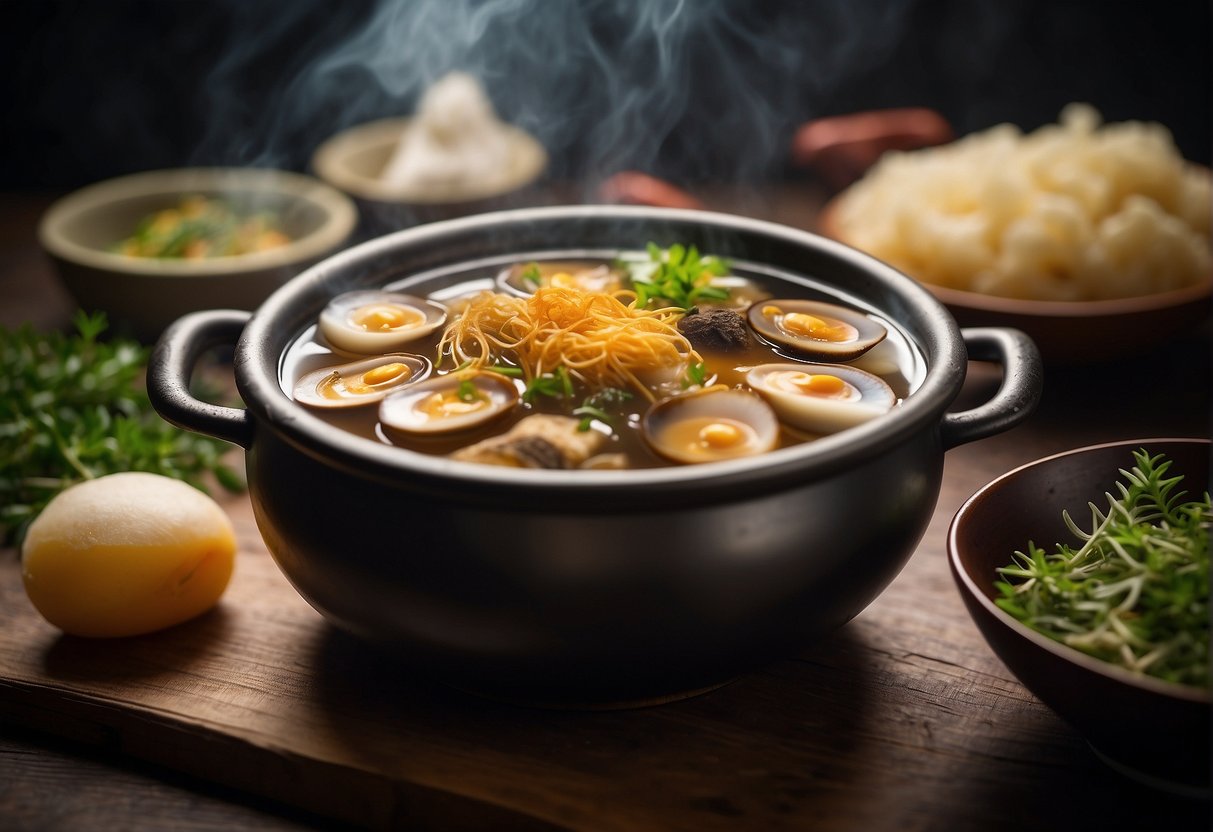
If you are a fan of dried abalone, you know that it is a premium ingredient that is highly prized in Chinese cuisine. The umami flavour of dried abalone is rich and intense, making it a perfect ingredient for creating delicious dishes that are sure to impress.
Braised Abalone with Mushrooms
One of the most popular ways to cook dried abalone is to braise it with mushrooms. This recipe is a classic and is perfect for special occasions. The sweetness of the abalone is complemented by the earthy flavour of the mushrooms, creating a dish that is both savoury and satisfying.
To prepare this dish, you will need to soak the dried abalone overnight in cool water. Then, braise the abalone with mushrooms, soy sauce, and other seasonings until it is tender and flavourful. You can serve this dish with steamed rice and a side of vegetables for a complete meal.
If you want to add some seafood to this recipe, you can use fresh or canned oysters. The briny flavour of the oysters pairs well with the sweetness of the abalone and adds an extra layer of complexity to the dish.
Abalone with Oyster Sauce
Another classic dried abalone recipe is abalone with oyster sauce. This dish is simple to make and is a great way to showcase the flavour of the abalone. The oyster sauce adds a savoury note to the dish, while the abalone provides a satisfying chewiness.
To make this dish, you will need to soak the dried abalone overnight and then braise it until it is tender. Then, stir-fry the abalone with oyster sauce, garlic, and other seasonings until it is coated in a rich, savoury sauce. You can serve this dish with steamed rice and a side of vegetables for a complete meal.
If you want to make this dish vegan or vegetarian, you can use mock abalone instead of dried abalone. Mock abalone is made from ingredients like konjac and has a similar texture to dried abalone. You can find mock abalone at most Asian grocery stores.
Overall, dried abalone is a versatile ingredient that can be used in a variety of dishes. Whether you are making braised abalone with mushrooms or abalone with oyster sauce, this premium ingredient is sure to elevate your cooking game.
Frequently Asked Questions
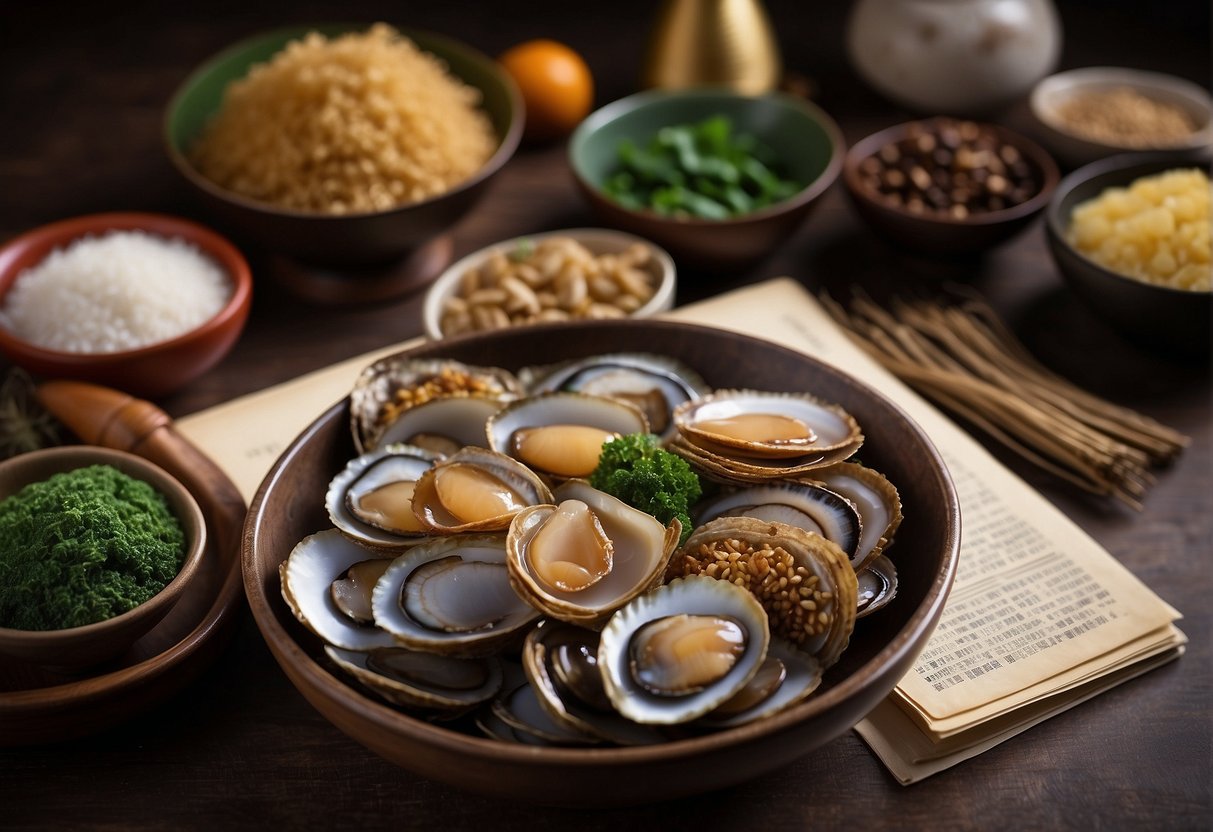
What's the best way to prepare dried abalone soup?
Preparing dried abalone soup requires a bit of effort, but the results are well worth it. Start by soaking the dried abalone in water for 24-48 hours, changing the water every few hours. Once the abalone has softened, gently scrub it with a brush to remove any impurities. Then, simmer the abalone with chicken or pork bones, ginger, and scallions for several hours until it becomes tender. You can also add other ingredients like mushrooms, carrots, and bamboo shoots to the soup for added flavour.
Can you walk me through cooking dried abalone?
To cook dried abalone, you first need to soak it in water for 24-48 hours, changing the water every few hours. Once the abalone has softened, you can braise it in a savoury sauce made with soy sauce, oyster sauce, sugar, and water. You can also add other ingredients like mushrooms, bok choy, and carrots to the dish for added flavour and nutrition.
Any tips for incorporating dried abalone into a rice dish?
Dried abalone can add a unique flavour and texture to rice dishes. One popular way to incorporate it is by making abalone congee, which is a type of rice porridge. Start by cooking rice in a large pot with plenty of water until it becomes porridge-like in consistency. Then, add the soaked and sliced dried abalone to the pot along with other ingredients like chicken, ginger, and scallions. Cook the congee until the abalone is tender and the flavours have melded together.
What's the secret to a tasty dried abalone and chicken recipe?
A tasty dried abalone and chicken recipe requires good quality ingredients and careful preparation. Start by soaking the dried abalone in water for 24-48 hours, changing the water every few hours. Once the abalone has softened, braise it with chicken, shiitake mushrooms, and other aromatics like ginger and scallions. The key is to cook the ingredients slowly over a low heat until the flavours have developed and the abalone is tender. You can also add other ingredients like bok choy or Chinese broccoli to the dish for added nutrition.
How long should I soak dried abalone before cooking?
To soften dried abalone, you should soak it in water for 24-48 hours, changing the water every few hours. The exact soaking time will depend on the size and thickness of the abalone, so be sure to check it periodically to see if it has softened enough.
Why does dried abalone come with a hefty price tag?
Dried abalone is considered a luxury ingredient in Chinese cuisine because it is difficult to harvest and prepare. The abalone must be carefully cleaned, dried, and packaged, which can be a time-consuming and labour-intensive process. Additionally, abalone populations have declined in recent years due to overfishing and pollution, which has further driven up the price.
